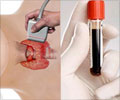- NHS Choices - Exopthalmos Bulging Eyes - (https://www.nhs.uk/conditions/bulging-eyes/)
- Mayo Clinic-Grave's Disease - (https://www.mayoclinic.org/diseases-conditions/grave’s-disease/diagnosis-treatment/drc-20356245)
What is Bulging Eyes?
Bulging Eyes refers to the abnormal protrusion or sticking out of one or both eyeballs from the eye socket. Normally, there should be no visible white between the colored part of the eye and the upper eyelid. If you can see white in this area, it is a sign that the eye is bulging. Bulging Eyes are also known as Proptosis or Exophthalmos and could be a sign of a serious medical condition.
Exophthalmos is most often caused by Grave’s disease, a disorder caused by over activity of the thyroid gland (hyperthyroidism) or due to swelling of the eye muscles, fat, and tissues behind the eye. This leads to more of the cornea being exposed to air, which can cause eye problems such as corneal dryness and inflammation of the conjunctiva. In extreme cases, Bulging Eyes can create pressure on the optic nerve, leading to serious weakening of eyesight.
Bulging of one eye, especially in a child, is a serious sign and should be checked immediately.
What is the Classification of Bulging Eyes?
Clinically, it can be divided into following five groups:
- Unilateral: This is due to traumatic lesions, tumors of the orbit (sockets in the skull that contain the eyeballs), acute inflammatory lesions, vascular lesions or birth defects.
- Bilateral: Developmental abnormalities of the skull, Grave’s disease, leukemic infiltration.
- Acute proptosis: Has a sudden onset and develops with extreme rapidity.
- Intermittent proptosis: Appears and disappears of its own in conditions such as orbital varices, recurrent orbital hemorrhage and highly vascular tumors.
- Pulsating type: Aneurysm of ophthalmic artery.
What are the Causes of Bulging Eyes?

- Grave’s Disease: The most common cause in adults, in women aged thirty to fifty years and people who smoke.
- Infection: The most common cause of Bulging Eyes in children.
Neuroblastoma : A type of cancer that affects your sympathetic nervous system and is usually found in young children.- Glaucoma: Glaucoma that is present from birth can cause the eyes to enlarge and make it look similar to protruding eyes.
- Hemangioma: A collection of abnormally shaped blood vessels behind the eyes.
- Leukemia: A type of cancer that affects your white blood cells.
- Periorbital cellulitis: Infection of the eyelid and periorbital soft tissues associated with severe inflammation of the eyelid.
- Retrobulbar hemorrhage: Bleeding into the eye socket.
Rhabdomyosarcoma : A type of cancer that develops in the soft tissues of your body.
What are the Symptoms and Signs of Bulging Eyes?
- Appearance of protruding eyes
- Excessive dryness in eyes
- Increase in visible sclera or the white part of eye between the top of the iris and the eyelid
- Difficulty in closing eyes fully while sleeping or blinking
- Scarring of the cornea which can lead to permanent loss of vision
- Difficulty in eye movement
- Visual impairment such as double vision, blurred vision or loss of vision
- Pain and redness in the eyes
- Headache
- Pulsation in bulging eye

How do you Diagnose Bulging Eyes?
- Physical examination: The doctor examines your eyes to see if they are protruding and also checks if your thyroid gland is enlarged. Your pulse, blood pressure are also noted.
- Vision test: To check acuity of vision, commonly called clarity of vision.
- Blood tests: These include tests to determine your levels of thyroid-stimulating hormone (TSH) and the levels of the antibody known to cause Grave's disease. People with Grave’s disease usually have lower than normal levels of TSH and higher levels of thyroid hormones.
- Radioactive iodine uptake: A small amount of radioactive iodine is given to the patient and the uptake of radioactive iodine by the thyroid gland is measured with a specialized camera.
- Ultrasound: Ultrasound uses high-frequency sound waves to produce images of thyroid gland. Ultrasound can show if the thyroid gland is enlarged, and is most useful in pregnant women who can't undergo radioactive iodine uptake.
- CAT scan/ MRI: A CAT Scan uses specialized X-ray technology that produces thin cross sectional images. Magnetic resonance imaging (MRI), uses magnetic fields and radio waves to create images of the thyroid gland. These tests may be done if above tests are inconclusive.
How do you Treat Bulging Eyes?
- Lubrication with artificial tears: When bulging of eyes leads to severe dryness of the eyes, extra lubrication is needed to protect the cornea

- Antibiotics: Given when infection is causative factor
- Corticosteroids: To reduce inflammation behind the eyeballs
- Prisms: In your glasses may correct your double vision
- Medications: Prescription medications include propylthiouracil and methimazole which inhibit the production of thyroid hormones and also block the effect of the thyroid hormones on the body. Anti-thyroid medications interfere with the thyroid gland’s absorption of iodine to produce hormones
- Surgery: The procedure involves either partially or completely removing one or more of the four walls of the eye socket. The purpose of the decompression is to reduce the fat tissue behind the eye which allows the eyeball to sink back into the socket
- Radioactive iodine therapy: In this therapy, you are given radioactive iodine which gets into the thyroid cells and the radioactivity destroys the overactive thyroid cells. This causes your thyroid gland to shrink and the symptoms lessen slowly over several weeks to several months










